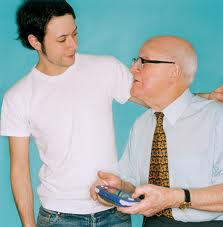
I talk to people across the state and nation. Many believe the day of organizing the Sunday School by ages (especially of adults) is past. They allow classes to focus on and reach whoever they want. Some are afraid to mention age-grading to their teachers and leaders for fear of a revolt.
What has happened in many of these churches are wide age spans in classes and gaps in some age groups. Sometimes young adults are missing. In others, ages 30-50 are missing. Sometimes individuals from the missing age group visit these classes and discover that the majority of those attending are older or younger. They don’t feel they fit. So they move on. Another thing that has happened is that there is no “ownership” of an age group to reach. Often when a class is trying to reach everyone, they go after no one.
Recently, I did a survey of growing and declining Sunday Schools in Kentucky to discover differences. One question which indicated differences was the following:
Classes in my Sunday School are… (Only loosely age-graded; Only younger classes are age-graded; Largely age-graded; Organized by method beside age-grading)
Question 28 Growing vs. Declining
- Only loosely age-graded 15.6% 30.5%
- Only younger classes are age-graded 24.6% 28.9%
- Largely age-graded 46.7% 29.9%
- Organized by method besides age-grading 8.2% 7.1%
Growing Sunday Schools are more likely to have adult classes which are organized by age-grading. The classes will have age ranges or birth year assignments. And the majority of those attending those classes will tend to fit the age assignment. Lessons will be more targeted to what is happening in the lives of attenders.
This helps when guests show up for Sunday School and are taken to a class. That way they aren’t taken to a class with an age group assignment for ages 30-39 but no one in the class is under 45. Guests feel lied to when that happens. The class may be nice to them and the lesson may be great, but the guests may not return. Also the class may not have much enthusiasm about reaching out to ages 30-39 when they are all older than the assignment.
In the smaller Sunday School, age group assignments will by necessity be broad. For instance in a Sunday School running fifty, there may be three classes: men age 55+, women age 55+, and coed ages 18-54. As this church grows, the coed group may become two groups and the ladies class becomes two, and so on. In even smaller Sunday Schools, there may only be a women’s class and a men’s class. In the smallest, there may be one adult class for all adults.
It helps when pastors, Sunday School directors, and teachers look honestly at who is attending classes and checks for gaps. New classes should be started to target and fill those gaps. A few of those closest to the age group (older or younger) of the new classes should be asked to pray about helping to start the new class. As new classes are begin in the gaps, the Sunday School will become even more age-graded and effective in caring for and reaching out to that age group.
Leave a Reply